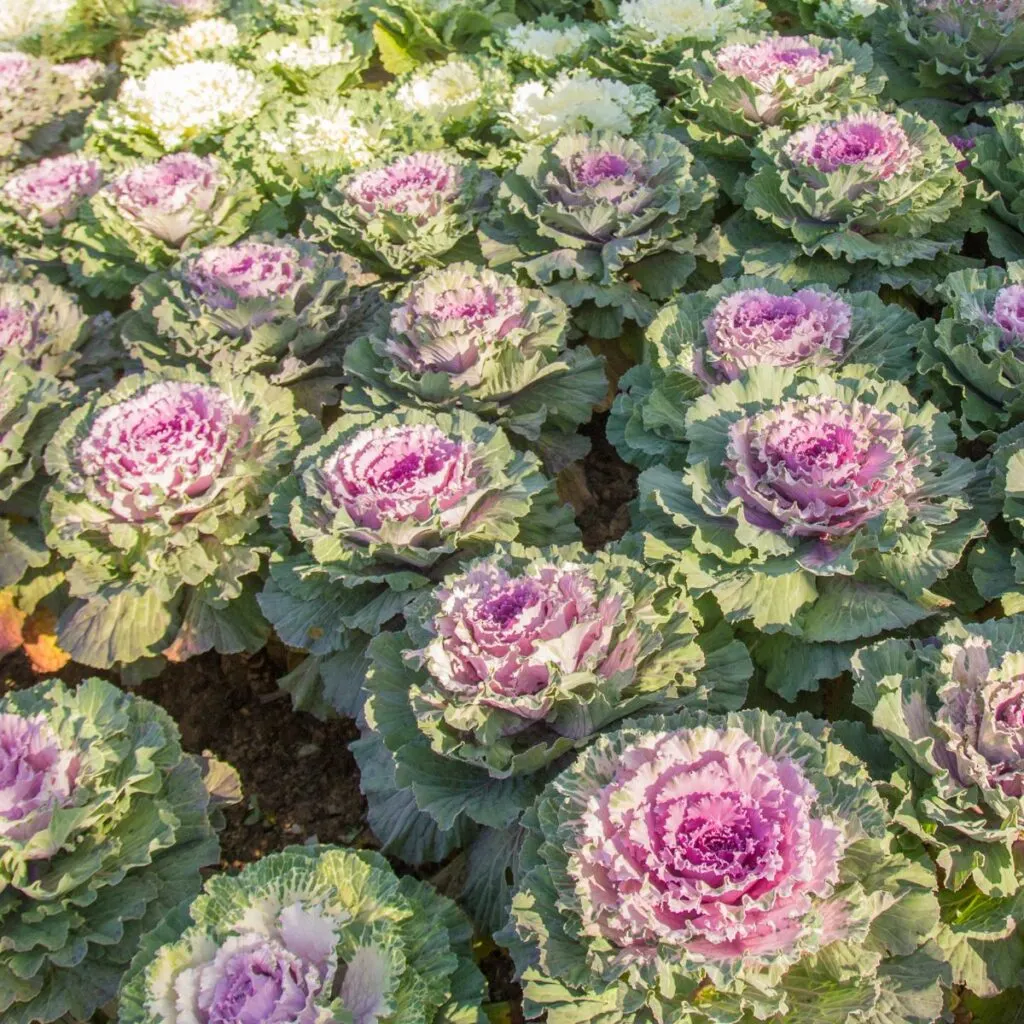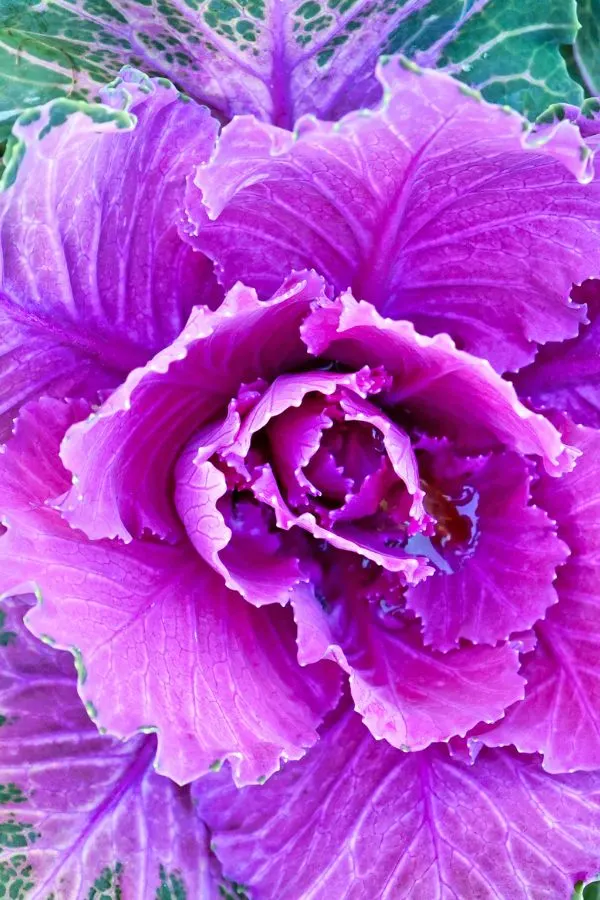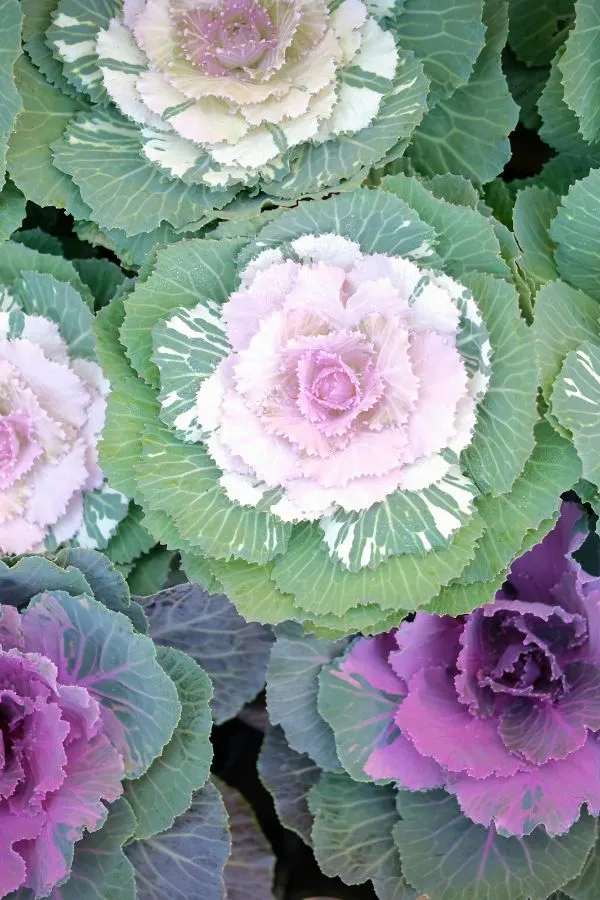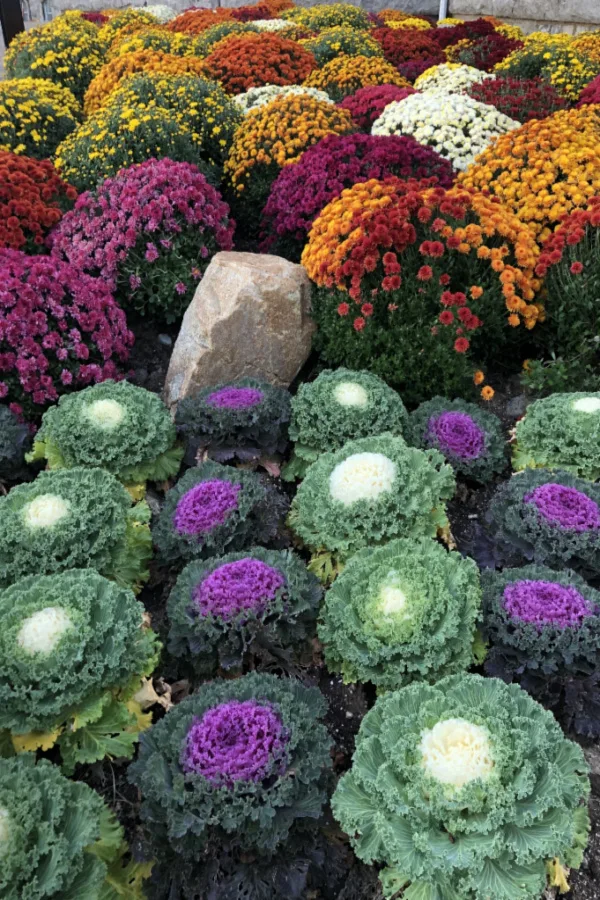Want to know how to plant and grow your own ornamental cabbage to create a stunning fall display in your flowerbeds, pots or containers?
As summer comes to a close and the cooler air starts to settle in, it makes for the perfect time time to plant ornamental cabbage – whether from seed or from transplants. These captivating plants are becoming more popular with each passing year, and can they ever add the perfect touch of elegance and charm to fall displays!
Ornamental cabbage features variants of green foliage with vivid violet, pink and white rosettes in the center. Although they are technically edible (they are not the tastiest of cabbages), most gardeners grow the plants for their beautiful flowers and bright leaves.

Grown as an annual, ornamental cabbage is actually part of the kale family and comes from the same species as broccoli and cauliflower. Not only are these plants able to take the cool temperatures of fall nights, they can even take light frosts and freezing and last to early winter.
How to Choose & Grow Ornamental Cabbage
When it comes to ornamental cabbage, there are several stunning varieties to choose from. It’s important to note that each offer their own unique burst of color and texture. Typically, their broad leaves and smooth edges are what makes them stand out.
Popular options include Japanese Osaka, Tokyo White, Rose Bouquet and Outsidepride Brassica Oleracea. All can grow easily from seed, although with their recent boom in popularity, you can often find transplants at many local greenhouses and nurseries as fall arrives.
Choosing the Perfect Location – How To Grow Ornamental Cabbage
Ornamental cabbage thrives in full sun to partial shade, making it an excellent addition to flower beds, borders and for pots and containers. For best success, make sure you select a location that receives at least 6 hours of sunlight daily for optimal growth and vibrant colors.

In addition to proper sunlight, ornamental cabbage needs well-draining soil to flourish. Adding organic matter such as compost is the best way to increase soil fertility and drainage. The plants perform well in most soils but will do best when the soil is neutral or slightly acidic.
Planting and Spacing – How To Grow Ornamental Cabbage For A Great Fall Display
How and when you plant ornamental cabbage all depends if you are planting by seeds or transplants. The plant can take six to twelve weeks to mature from seed – but will look good the entire time it grows to that point.
If planting seeds in late August or the first part of September, you can usually have sizable plants by the middle of October for a great fall display. If using transplants, putting plants in the ground around the first of October is ideal for most locations.
Space plants approximately 12 to 18 inches apart, providing enough room for their leafy growth to spread without overcrowding. When it comes to pruning and upkeep, remove any brown or yellowing leaves at the bottom of the plant as they grow.
You will often need to do this after periods of excess rain or after hard frosts. This usually only affects the bottom outer leaves and they are easy to remove.

Consistent and thorough watering is vital as your seeds and/or transplants establish in the soil. Keep the soil consistently moist but not waterlogged. Applying a layer of finely ground mulch around the plants is important as well.
Mulch will help to retain moisture and keep soil temperatures cool, all while keeping competing weeds away too.
Fertilizing & Pests – How To Grow Ornamental Cabbage
Although an annual vegetable plant, ornamental cabbage does not need a lot of additional energy in the form of fertilizers to perform well. In fact, too much nitrogen will grow larger leaves, but the leaves will have far less vibrant coloring.
A light dose of an all-purpose balanced granular fertilizer (5-5-5 or 10-10-10) when plants are a few weeks old is about all they will need. It will help to spur a little early growth without compromising leaf and bloom color later. Product Affiliate Link: Natural Alternative 5-5-5 All-Purpose Starter Plant Food
Although fairly resistant to most pests, aphids, flea beetles and cabbage worms can sometimes attack ornamental cabbage. Hand picking is usually enough to keep plants safe. If problems with insects persist, neem oil is a great all-natural option for spraying plants to get the insects under control. See: How To Use Neem Oil On Plants – Control Pests Organically!

Getting The Most From Your Plants – How To Grow Ornamental Cabbage
Nature is the biggest aid in helping to get your plants more and more colorful as autumn progresses. As the weather gets colder, the leaves develop deeper shades of pink, purple, and green. Ornamental cabbage needs nighttime temperatures of below 60º Fahrenheit for the hues to really develop.
The cooler weather helps to stifle production of chlorophyll which helps to intensify the colors of the center rosettes. This transformation adds incredible depth and dimension to your fall display.
Although ornamental cabbage grows the best when daytime temperatures are between 40 to 80º Fahrenheit, they can actually survive temperatures down to almost 5º Fahrenheit. Anyone who has ever grown the amazing plant knows how they can often last all the way to the new year outdoors – all while still looking great!
Enhancing and Contrasting Colors
The true allure of ornamental cabbage lies in its ability to create a captivating fall display. Pair ornamental cabbage with other fall favorites. For example, mums, pansies, and ornamental kale together create a dynamic blend of colors and textures. The contrasting colors can really pop in a display!

You can also plant ornamental cabbage in tiers or layers of varying heights to add depth and visual interest to your garden beds. These tiered arrangements are easy to set up and look fantastic for fall. Ornamental cabbage looks great in symmetrical patterns and contrasted colors too. This makes for a formal and elegant look, perfect for more structured gardens.
You can also create stunning container arrangements by mixing ornamental cabbage with ornamental grasses, trailing vines, and seasonal accents like pumpkins or gourds. White pumpkins or decorative acorn squash really help the white and pink centers stand out.
Here is to growing ornamental cabbage this fall and enjoying its unique beauty!
Follow Our Facebook Page For Even More Great Tips! Simple Garden Life Facebook Page
Simple Garden Life is a website dedicated to keeping gardening fun, simple and enjoyable! We publish two new articles each week along with a new garden podcast episode every two weeks. This article may contain affiliate links.
